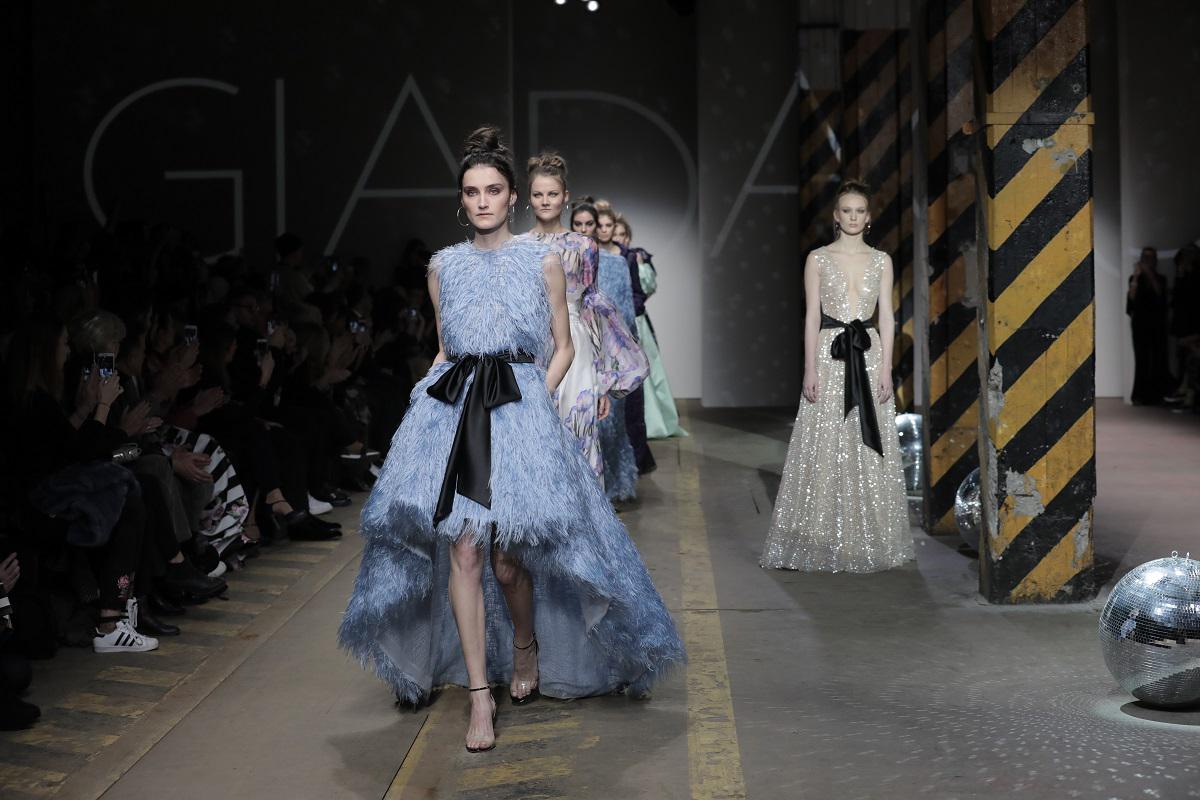To be irreplaceable one must always be different
Coco Chanel
The history of fashion is a history of people. It has long been known that history moves in a spiral, and new events are to some extent a repetition of previous ones. And the history of fashion is no exception. If you follow the changes in fashion, sooner or later, various trends reappear in the looks of modern women. To do this, let’s go through all the major trends of the past century. You could ask: “Why precisely the last century?”. After all, fashion began to emerge in the distant XII-XIII centuries, but at that time it remained a part of the life of the elite, nobles, kings and rich people. Mass fashion became only in the 20th century, which was facilitated by the creation of a pret-a-porter style – boutiques of the finished dress.

1900s fashion. Modern
“Beautiful era” of Art Nouveau. In the 1900s, the fashion for the female silhouette began its transformation, having first undergone a very strong influence of the modernist style, which identified the woman with an unearthly creature. The refusal of chilling movement, massive outfits, emphasis on harmony, the balance between aesthetics and expediency. In the early 1900s, the fashion appeared on an S-shaped silhouette: a curved corset. He raised his chest and emphasize a narrow waist, which in extreme conditions reached 37 centimeters. Shoes – comfortable with a small heel. We suppose the Kardashian family would appreciate the corsets of those times.
1900-1910 Fashion trends

1910s fashion. Orientalism
Conventionally, the fashion of the 1910s can be divided into two periods: military and post-war. The first is characterized by its convenience and brevity because women put on men’s clothes. The second is significant due to the bright and eccentric images emphasizing femininity and sexuality. Since 1909, a wave of interest in the harem theme has begun. Fashion abandoned the corsets and turned her attention to the half-round rounded women. The subject of the adoration became full forms with plump arms and legs. As they say in our time, plus size was in trend. Paul Poiret, known in his time as the “emperor of fashion”, was the first to pick up this fashionable trend and introduced flawless and transparent dresses, Japanese-style robes, parachute pants. Among the accessories in the 1910s, there were all sorts of hats. Which have a smaller size and decorated with feathers and beads.

1920s fashion. The era of Jazz and Emancipation
The epoch of the 1920s gave rise to a new art deco style, a peculiar fusion of neoclassicism and modernity. A new look of a woman was born – with a completely new attitude to the body and its forms – the look of woman-the sex of a boy, a teenager. Distinctive features of the outfits consisted in the absence of breasts and hips. The fashion of that time chained women into flat reefs hiding a breast. A long string of pearls had to lie on a perfectly flat chest. Hairstyles became short under the boy, makeup became too bright. The open back has come into fashion. Jazz conquers hearts, Charleston and tango conquer bodies. Women’s skirts are becoming shorter, shoes become an accessory that emphasizes the length of the legs. This is the time of the famous shoemakers – Salvatore Ferragamo. Andre Perugia, Charles Jourdan. Coco Chanel creates her little black dress.




Coco Chanel 





1930s fashion.
the Great Depression
In 1929, the Great Depression put an end to the enjoyment of luxury. The 1930s gave birth to a new style – unisex, which was then called “la garconne”. Women have learned to drive a car, defiantly smoke a lot, cut their hair short, dyed their lips with bright red lipstick. Simplicity is replaced by the open sexuality. Appears fashion for soft, flowing feminine clothes with a “prudent” length. Almost every woman of the time had jackets, suits, tight dresses, long skirts.

Elsa Schiaparelli

Marlene Dietrichh



1940s fashion. World War II
The Second World War influenced all spheres of life and fashion as well. There was a saving in everything. Clothing from the battlefields is in fashion, women try on men’s clothes. Coco Chanel creates a tweed suit for women. Shoes prefer a low heel, the practicality of shoes was important. In place of natural come artificial materials. Roger Vivier strengthens the heels with a steel rod and opens up to the world stiletto heels. Spread silhouette: broad shoulders, waist strap, and narrow hips.

1950s fashion.
The era of New Look.
The new style received name New Look thanks to the editor of the American magazine Harper’s Bazaar, Carmel Snow. It canceled everything inherent militarily, returning romantic chic and sophistication to women’s clothing. Fashion has regained its mystery and femininity. Christian Dior’s ideal is timeless elegance and femininity. Couturier considered flowers to be the embodiment of absolute beauty. And among the flowers roses and lilies of the valley were loved the most. They also served as prototypes of the main silhouettes of a new fashion.

1960s fashion. Space, the sexual revolution
“The Beatles” and “The Rolling Stones” opened the fashion for young people, which before simply did not exist. Women’s fashion has again acquired a boyish silhouette, the standard of which was the model Twiggy. With easy hands, Mary Quant in fashion entered the mini-skirts. There is a new subculture in London called Mods (eng. Mod – from modernist). Fashion promotes the rules of “perfect taste” and minimalism, dressing on the principle – “less means more.” In 1962, the legendary Beatles became followers of the mods style. They take off leather jackets and T-shirts and dress in fancy suits.








The Beatles

1970s fashion. Hippie and Disco
The 1970s were diverse and eclectic. After a decade, many styles flashed through – retro, ethnic, classical, romantic, folklore, gypsy, hippie, linen, sports, military and safari, disco, unisex. The concept of “basic wardrobe” has appeared, consisting of individual items that are easily completed with each other. Since then, the kit began to occupy the main place in the wardrobe of a modern person. Another iconic thing of the seventies – a thin sweater with a high stand-up collar.

1980s fashion. Careerist, aerobics, aggressive reality
The style of the 1980s would mainly be about one thing: more is more. No matter which style you preferred, the more is more approach was present. If you went for an office look, your shoulders ought to be heavily oversized and your outfit in strong and contrasting colors. If you went for a funky look, voluminous hair, neon colors and denim on denim. In the eighties it was voiced that all ideas and reforms in fashion were already exhausted, and the only opportunity to create something new was to turn to previous decades and styles of the beginning of the century. Among the designers who still managed to say their word in fashion, it is worth noting the Italian couturier Gianni Versace. Underlined sexuality and frankness in the 1980s became “new black”, and Gianni Versace once again proved that fashion does not have the concepts of “permissible and unacceptable”, there are only features of perception and individual boundaries. In general, the decade can be described as follows: the return of aggressive female sexuality in clothing. Passion for aerobics, all wear bright body and leggings. Clothing-free cut, bright makeup, and perm for women. Shoes – platforms, pointed toes shoes and boots. Stiletto heels are perfectly combined with a women’s business suit.

1990s fashion. Grunge and unisex
At that time the slogan acted: “Be yourself”; all fashionistas listened to him, paying no attention to anyone. The time of freedom and striving for self-expression is reflected in clothes, hairstyles, and make-up. This period is characterized by minimalism, famous casual style, unisex, grunge, military, sport. And they could act separately, as well as intertwined with each other.
Fashion is an art that appears as the fruit of the author’s imagination. It admires the greatness of the past, then absorbs the pressure of the present. But it always moves, develops, draws inspiration from the past, reflecting history. In the XXI century, it has already changed several trends, and less than two decades have passed. But it was the 20th century that made it fast, impetuous and changeable.
Follow the fashion, but do not change your taste.
With love,
Sabina Bex




















































Very interesting. There’s never a new fashion but it’s old.